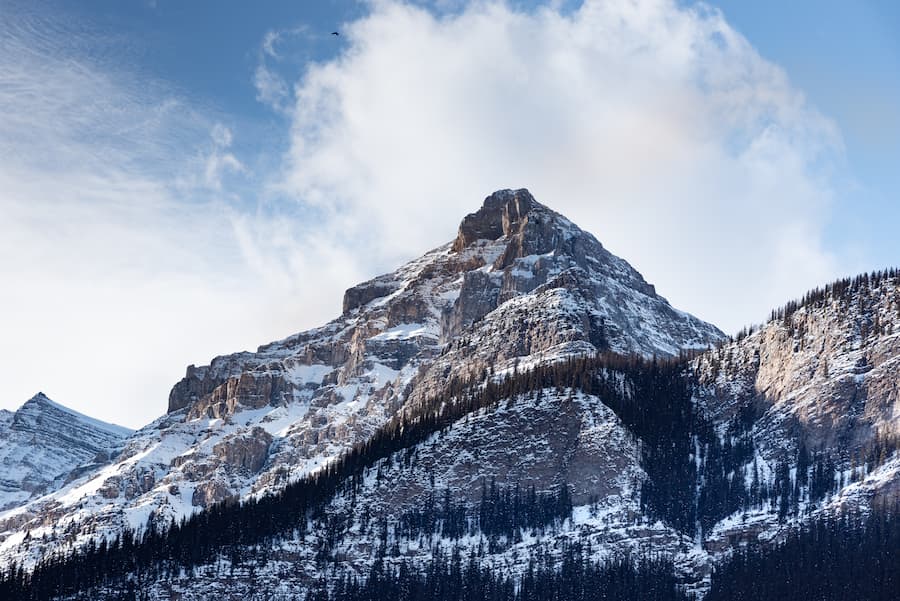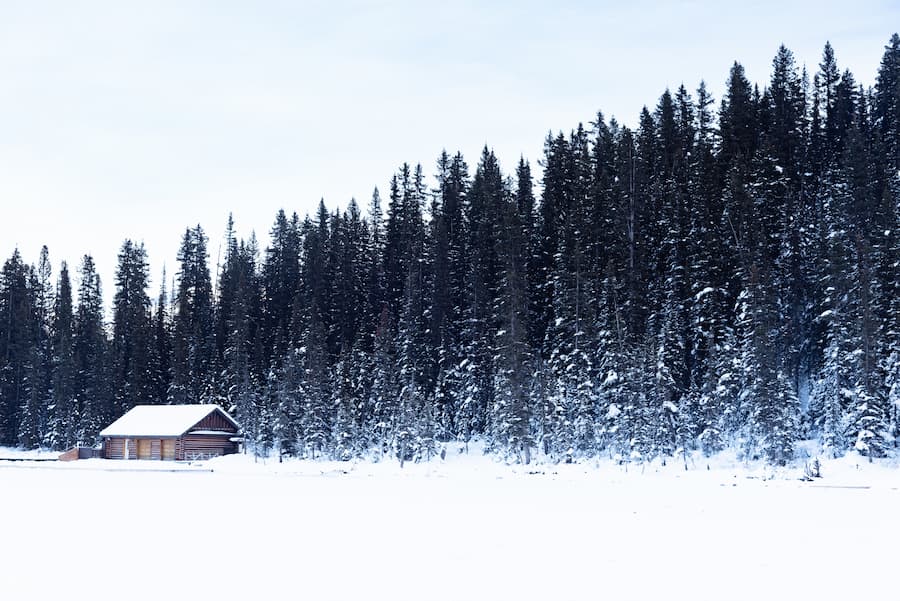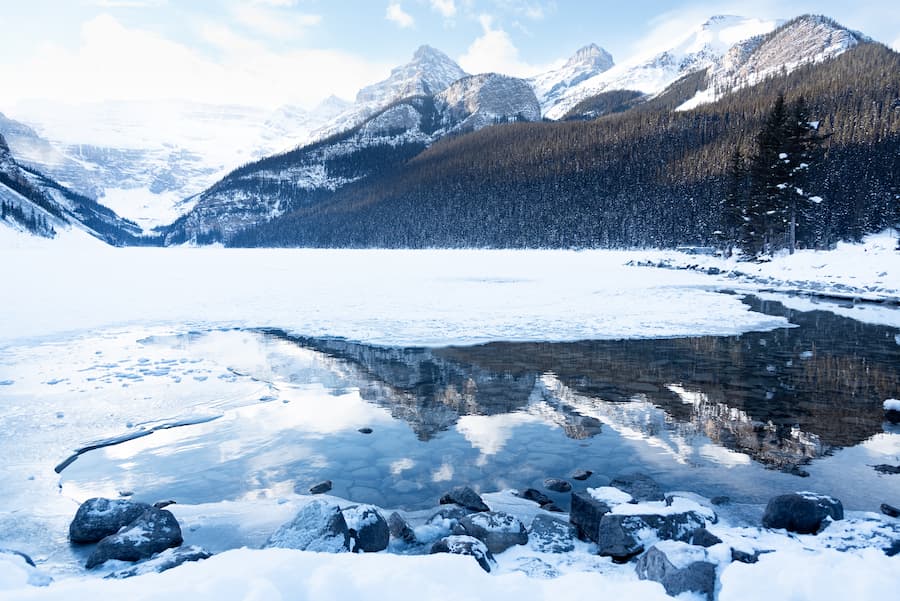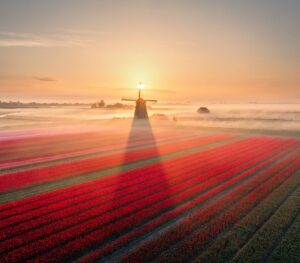
Photo tour in Azores, Portugal
Join us in the Azores for a unique photo tour, where you’ll elevate your creative skills with expert guidance from Ronald Soethje, Bruno Ázera, and Nomadict.
Having studied photojournalism and now focusing on landscape and travel photography, Sarah is familiar with a wide range of techniques to get her stories across. In Sarah’s article, we receive tips based on her own creative career journey, learn what she thinks makes great landscape photographs, and see a before/after of one of her images.
As long as I can remember, I have been curious about the world around me. I was raised spending a lot of time outdoors; some of my earliest memories are of camping with my family along the Canadian West Coast. Likewise, we would spend summers up at our family cabin in rural Alberta. Those days were filled with adventures—running barefoot across open fields, hiking through forests, swimming in the lake… And the nights were spent cozied up around a campfire, looking at crystal-clear stars and sharing ghost stories. These experiences imbued in me a sense of wonder and deep appreciation for the natural world. To this day, spending time outdoors makes me feel alive.
As a child, I had a wild imagination and a burning desire to explore—encouraged by my parents, who love to travel. When I was around eight years old, my parents took my younger brothers and me out of school for three weeks to go on a road trip throughout the United States. My mom encouraged me to keep a journal of our travels. In lieu of photographs, I collected postcards from all the places we visited: Yellowstone National Park, the Lewis and Clark Caverns, the Grand Canyon, San Diego, and Disneyland—to name a few. This experience not only fed my wanderlust but also my passion for storytelling. While at the time, I didn’t necessarily realize that being a photographer was a career path, I knew I wanted to find a way to discover the world around me and share stories.
I didn’t pick up a camera until university. Initially, I wrote articles, poems, and journal entries to tell stories. Later, I worked as a journalist and marketing professional. Writing was my first way of expressing myself and detailing the world around me. Photography seemed like a natural extension of this desire to tell stories. At university (where I studied journalism, focusing on print and photojournalism), I was fortunate to have a photography professor who encouraged my passion.
Aside from my education, a key moment that also shaped my pursuit of photography was working for a variety of newspapers and magazines. There are so many valuable skills to be learned through photojournalism. I was often thrust into situations where I had to shoot on the fly. Likewise, I had to adapt to capturing a wide range of subjects and situations—from sports events and ribbon-cuttings to intimate human-interest stories. These lessons taught me so much about myself and about photography.
Another important moment that fuelled my passion for travel, photography, and storytelling was my first time backpacking through Southeast Asia. I had just graduated from university and was 22 years old at the time. This trip was formative for me in many ways. Particularly, it solidified for me that travel photography was what I wanted to do with my life. The feeling of exploring a new place through my camera is incredibly fulfilling. Photography can be a really beautiful way to break down barriers, especially language barriers, and open the doors for inquiry and learning. It’s also an important way for me to express myself and how I feel at a specific moment.
This trip was also instrumental in terms of developing my photographic style. I realized it’s very important to me that my edits enhance what I capture on camera without compromising the original photo. Over the years, I’ve learned many additional lessons that have helped me grow as a photographer.
The first, and perhaps most important lesson I learned, was to stop being a perfectionist. This is not to say that I do not strive for excellence and mastery of my craft. I think photography, like most art forms, is a lifelong journey. But it did mean giving myself permission to evolve. It took me a long time to learn this lesson. Establishing one’s style can’t be forced; the only way to discover photographic style is exactly that, to discover it. To do the work. To put in the hours and shoot as much as possible. This also meant being okay with photos not working out how I envisioned, so I could learn and try again.

I still tell myself this next lesson when trying something new: be brave. Adventures get us out of our comfort zones. They’re supposed to be uncomfortable, and discomfort leads to growth. However, the very first step is being brave. It’s getting out there and shooting in places you haven’t been to before or asking a stranger if you can take their portrait on the street. It’s putting your work out there for people and clients to see it. As an entrepreneur and an artist, being brave—being vulnerable—has been essential for pursuing my dreams.

It’s also essential to experiment and try new things. Since my background is in photojournalism, I was taught to barely edit my images. A quick “levels and curves” edit was all that was considered acceptable so that the integrity of an image was maintained. This line of thinking was beneficial because I had to make sure that I was happy with what I captured on camera, but it was also limiting. For instance, I didn’t really begin to experiment with color grading until after I stopped working at a newspaper. It wasn’t until I gave myself permission to make art, instead of capturing a newsworthy image, that I felt freed of certain constraints and I was able to learn so much more about my craft. This is not to say that documentary photography is not still important to me, but branching beyond that and trying new techniques has been essential for my growth as an artist.
Finally, don’t give up on your dreams. I know that sounds cliché, but it’s true. If something is really important to you, chase it. Work for it. Every journey is different, but if you want something badly enough, if it lights your fire and brings you joy, then it’s worth fighting for. Choosing a creative path is not linear, and that is okay. That is what makes being an artist so fulfilling, and also so hard. Because it is a lot of hard work. Not just hard work, but hard, consistent work. I work on my craft every day in some form or another, from shooting and editing to reading about photography, watching tutorials, and looking at photography books and art. To be successful at something it has to consume you enough that when presented with the option to watch Netflix or work, you choose work. Rest is important too, but overall more time needs to be spent creating.
Hard work has resulted in many opportunities for me, including landing clients. My first travel photography client was a tour guide company based in Thailand, during my first backpacking trip in Southeast Asia seven years ago. I took part in two tours and provided the company assets they could use for social media, their website, and their brochures. I can remember feeling so nervous the night before the first tour; I hardly slept.

The day was a total whirlwind, in the best possible way. Looking back now there are so many things I would have done differently, but sometimes the only way to learn is to dive into the deep end and figure out how to swim along the way. This experience gave me a lot of confidence. It pushed me out of my comfort zone and showed me that I was capable of doing so much more than I thought possible at the time. I learned to trust myself; a lesson I’ve taken with me as my career has progressed and as I worked with other clients.
In roughly a year, I’ll be entering my thirties. I recently made a list of goals, some big, and some small, that I hope to achieve during this decade. Among those goals includes supporting my family as a travel photographer. I intend to split my time between a home base in Canada, perhaps moving to the West Coast, and assignments abroad.
I envision continuing to work for clients that resonate with my work and my values, while also creating prints and other products that I sell both online and in my own boutique. My idea is to own a space that functions as a hub for photographers and other artists to network and showcase their art. On the personal side, I plan to travel as much as possible with my family. It’s important to me that my children learn about people, places, cultures and cuisines different from their own.
In terms of strategies to get me there, I think that comes down to a lot of hard work—as always. I plan to foster current client relationships, connect with new clients, continue to hone my craft, and build a community of other people who love to travel, cherish nature, and want to be moved by the beauty of this planet. In the short-term, two big goals of mine are to open a print shop on my website and to exhibit my work at a local gallery.
I live in a city called Calgary, Alberta, which is right by the Rocky Mountains. I can remember being really small, and my parents would mountain bike with my brothers and I in a carrier. Many family memories were made exploring Kananaskis, Bragg Creek, and Banff National Park. I completed my PADI dive training in Lake Minnewanka. Before my son was born, my husband and I spent our babymoon in a log cabin on Storm Mountain. As a Calgarian, the mountains are a part of my identity. Every time I hit the highway and leave the city behind, I feel so excited to be out in the wilderness. It’s hard to put into words, which is why I love photographing the mountains. They are magical. Nature is magical. After being immersed in the outdoors I feel like I come home to myself. I feel centered, grounded. At peace. People who don’t believe in magic just need to go to the mountains.
However, I also am passionate about photographing other types of landscapes, which are always a joy to discover while traveling. During a trip through New Zealand, for example, I fell in love with photographing the forests there. There are two shots from that trip that I am particularly happy with. What I love about each of these photos is how mystical the light feels. Although shot at different locations, they both evoke a certain eeriness. Each image makes me feel like I have stumbled into an enchanted forest.
Whether in a forest, mountains, or any other scenery, light is something I really pay attention to while photographing. It is a key aspect of my style. As I used to work as a photojournalist, I was often shooting at all times of the day. This has made me very adaptive and responsive to finding beautiful light at all times—whether at golden hour or in the middle of the afternoon.
Undoubtedly, golden hour and blue hour are key times for making images. The light at those times of day is very beautiful. To shoot then requires research and scouting, if the latter is an option, to not only know what times golden/blue hour hits, but also which direction you’re facing. This is especially important for mountains and cityscapes that may block the sun before golden hour really hits, depending on whether the sun is rising or setting.
Yet, I think there is value in photographing around the clock, so to speak. It’s an excellent challenge that forces me to be creative and to really pay attention to how light behaves. For instance, take these two images. Both were taken at the same location, Moraine Lake, on the same day, October 6th of this year. However, each was taken at a different time.
I had not been to Moraine Lake before, so to prepare for the excursion I researched what the area looked like ahead of time. I also checked the weather report to get a sense of what the conditions might be like. Since I was photographing for myself, I did not feel the need to scout in advance because I was excited to experience the lake for the first time.
When I edit my images, I divide the process between basic corrections and mood adjustments. As for the basics, I usually do minor exposure corrections if needed, deepen the shadows/blacks, brighten highlights/whites, increase vibrancy and complete S-curve adjustments by pulling-down blacks and pulling up whites.
After basic adjustments are complete, I make slight edits to create a dreamy or moody look—depending on how a given place made me feel at the time. These edits finesse an image and convey the magical feeling I experienced during the shoot, while staying true to the original photo.
As an example of my editing process and style, below you can see the before/after of the second image I spoke about earlier. The RAW version of the photo did not quite capture the day’s golden, dreamy vibe. So I used one of my presets that warmed up the overall image, desaturated the greens, slightly saturated the yellows, and boosted green and blue luminance—while retaining the water’s gorgeous turquoise tones.
I think the four ingredients for a great landscape photo are: light, composition, style and intention. I’ve broken down my thoughts on each of these categories below:
Light: Photography translates to writing with light. I think in any photographic genre, light is key for conveying mood and emotion, and for creating an image that moves people. Even the lack of light can create beautiful images. For instance, landscapes captured on a rainy day may not have dynamic lighting, but can still evoke moodiness. It’s essential for aspiring photographers to understand how light works, and how it impacts an image’s story.
Composition: Often when asked, “What makes a good photograph?”, the answer is always composition. When you’re starting out, it might not always be clear what a good composition is. That’s where compositional techniques come in. Learning how to use the rule of thirds, leading lines, framing, colour, negative space, etc. is really important for creating a beautiful image. By familiarizing oneself with these techniques, they can be layered together to create a photo that stands out.
Style: I remember learning about the concept of having a photographic style when I first started out. I was so flustered because I didn’t really think I had one, and I had no idea how to develop my style. I’ve since learned that the only way to discover your style is to practice, try new things, and discover yourself. There are no shortcuts. For me, establishing my style was an inside-out process. As I learned more about myself, especially through traveling, my artistic vision evolved too. I anticipate that as I continue to grow and change, my style will also adapt.
Intention: Creating images with intention is essential for telling a story, whether in one image or a series, that resonates with other people. A photo’s intention could be something abstract, like an emotion you want to convey, or something more tangible, like a specific shot you want to capture at a set time of day in a certain location. Essentially, this is the “why” behind photography. Ask yourself: Why do I want to make photos? And create work from that headspace.
Fundamentally, the most important quality of an image is the emotional connection you have to it, or that you can evoke in others through your artistic vision. There are many photos that are close to my heart, but this image from my series up at Moraine Lake is very important to me. Not only do I think it’s a beautiful image that communicates the peace and tranquility at Moraine Lake, but I also took it on my birthday surrounded by my family.
I remember feeling so happy when I took this photo. While I focused on composing this shot, behind me I could hear my parents and husband laughing and chatting, and my 6-month-old son cooing gently. Being able to balance my passion, my profession and my family is really important to me. I’m so excited to share my love of photography with my son. Many of my photographs capture the beauty of the natural world; an appreciation that I hope to instill in my children while sharing with them how important it is to conserve our planet’s wild places.
This is just a small reminder that even as visual creators, we are more than photographers or filmmakers. Above all else, we are human beings and live a bigger life than the moments we get to capture. Having that balance is also part of being successful.

Join us in the Azores for a unique photo tour, where you’ll elevate your creative skills with expert guidance from Ronald Soethje, Bruno Ázera, and Nomadict.

In this article, Forest shares how years of chasing scale, silence, and raw landscapes shaped his approach to photography, from the deserts of Kazakhstan to the volcanic ridges of Iceland. He talks about how he uses light, texture, and vast negative space to create images that feel both intimate and overwhelming.

Simon shares the journey behind his photography, from early inspirations to field techniques, editing, and the story of the winning shot that shaped his path.

In this article, Miro shares how his love for cinematic music evolved into a deep passion for photography and how he uses light, color, and atmosphere to turn the streets of Prague into living film scenes.

In this article, Stefanie reveals how her background in physics sparked her passion for astrophotography and how she blends science with creativity to capture the beauty of the night sky. Readers will discover her approach to color, contrast, and editing, as well as her aurora photography workflow.

Spanish photographer Yhabril captures the profound connection between humans and the mountains that shaped him. Growing up in the Pyrenees, his work bridges outdoor sports, landscapes, and celestial scenes — often blending athletes, moonlight, and wilderness into striking visual stories.

In this article, Ariane shares how photography helped her navigate personal challenges, connect authentically with people and animals, and develop a philosophy rooted in empathy and artistic freedom. Readers will also discover her ethical approach to wildlife photography and her trusted equipment for both camouflage techniques and cameras.

Discover how to photograph Dutch tulip fields in their most magical light. From choosing the right gear and lenses to mastering composition, color, and aerial perspectives, this guide shares creative techniques to capture the beauty of the Netherlands’ tulips. Learn how light, color grading, and proportion bring emotion into every frame.
